Once upon a time, in a blog a long, long time ago, in a galaxy far, far away, a wise connector guru said “Plating affects the life and quality of the connector system, including corrosion resistance, conductivity, solderability, and of course, cost.” Actually, it wasn’t that long ago; it was in a blog we posted last month. And it was written in Indiana, which does seem to be far away from everywhere. Finally, it wasn’t a wise connector guru. Rather, it was written by me, although I was quoting a couple of connector gurus.
This is part three of a discussion with Phil Eckert, Samtec’s Quality Engineering Manager, and Matt Brown, Principal Engineer, about all things pertaining to connector plating. BTW, here’s a link to part one, and here’s a link to part two, here’s part four, and here’s part five. These blogs answer connector plating questions that Samtec Quality and Processing experts are frequently asked.
And let me add one more disclaimer: these questions deal primarily with gold and tin plating, as these are the most common connector plating options.
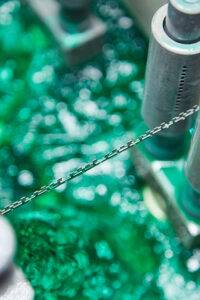
What underplating is best? How thick should the underplating be?
Samtec underplates with 50 µ“ minimum of nickel. This increases durability, and it prevents base metal migration. A nickel underplating creates a physical barrier between the copper of the pin and the gold surface finish, or plating. Nickel is also inexpensive.
The downside to nickel is its ductility. Too thick of a layer can lead to cracking if the connector leads are formed or bent after plating (e.g., a right-angle forming process).
Do you recommend lubrication for connectors?
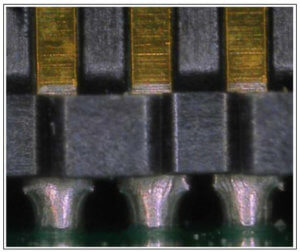
We rarely recommend lubrication for Samtec connectors, because it’s not necessary for most of our customers’ applications. Having said that, we’re not opposed to lubricating connectors, and you can use lubrication on our connectors.
For example, we have a standard lubrication option on a few of our connector series that have unusually high normal, mating, and unmating forces. In these situations, it’s possible the normal forces are so high that the connectors can be damaged during mating and unmating.
Also, lubrication adds a layer of protection against corrosion. We’ve had success using lubrication on both gold- and tin-plated contacts. Lubricants first came into wide use in tin-to-tin mating applications. Such mates can cause fretting corrosion, which is mitigated easily with lubrication. Gold on gold mates can use lubrication to seal pores and extend life in corrosive service environments.(1)
What are the voltage and amperage ratings for gold and tin connector plating?
In our previous Q&A session, we mentioned that the maximum continuous usage temperature for tin plating is 105° C, and it’s 125° C for gold. While we have connectors designed for power applications, most Samtec board-to-board components transfer signals, and the current level ranges from around 24 Amps on 5.00 mm pitch dual blade “power connector sets,” to 5 Amps – 6 Amps on a 2.54 mm pitch connector set, to around 2 Amps on 0.80 mm pitch microsystems.
The amount of current a contact system can carry is best indicated by current carrying capacity (CCC). The geometry of the contact system, the ambient conditions, the density and location of components on a customer’s PCB all play a role in the inevitable and natural rise in temperature as current passes through a connector. The goal is to hold the current to a level such that the maximum continuous use temperature is not exceeded. Therefore, the amount of current a connector system can tolerate is related to the temperature.
Does the base metal affect the functionality of the gold or tin plating?
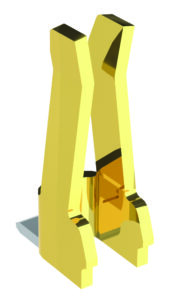
We don’t recommend a surface finish based on the base metal of the connector pins. At Samtec, the base metal of most of our terminals and contacts is either Phosphor Bronze or Beryllium Copper, and both gold and tin work well with both of those base metals. Gold plating is common on Beryllium Copper contact systems, often because smaller, higher density, lower profile connector systems are usually made of Beryllium Copper. These smaller contact systems generate lower normal forces, in the 30 – 40 grams range, so Au-plated Beryllium copper is preferred.
Similarly, insertion and withdrawal forces are a consideration with tin-plated contact systems. As discussed in the first blog, tin-plated contact systems usually have a minimum thickness of 100 µ”, and are often 150 µ” or more, which can affect insertion and withdrawal forces, especially in high-density (i.e., high pin count) connector systems.
The plating combination of gold over nickel underplating was engineered for copper-based alloys.
What plating should I use for an edge card connector?
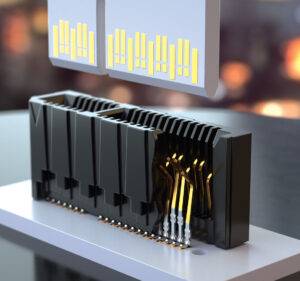
We recommend hard gold plating on the pins of an edge card connector; our gold is cobalt hardened. Likewise, we recommend the pads on the PCB, that mate with the connector also be cobalt-hardened gold. For the pads, we recommend a hardness of ASTM B 488 Type 2, Grade C. We recommend this because most edge card applications see a considerable number of mating cycles.
Stay tuned for part 4, coming soon. If you have questions, please direct them to [email protected].
(1) Samtec’s Kevin Meredith published a paper entitled “The Effects Of Lubrication On Connector Processing.” The objective of the test was to determine if any level of connector lubricant contamination in the lead region of the connector could result in processing defects. The effects of lubricant type, lead geometry, flux type, and processing technology were considered variables in this study.
In the paper Kevin details the test plans, and the processing results of several connector sets to meet IPC-A-610F standards; the connectors tested were the SEAM, ST4, HSEC8, and TFM series.
Of course, Kevin shares the conclusions of the tests. While I prefer to let the paper speak for itself, the essence of the conclusions is it is unlikely that the Santolube OS-138 used by Samtec will result in processing problems for any level of accidental lead contamination.

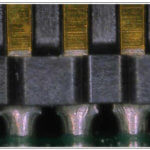
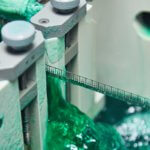
Leave a Reply